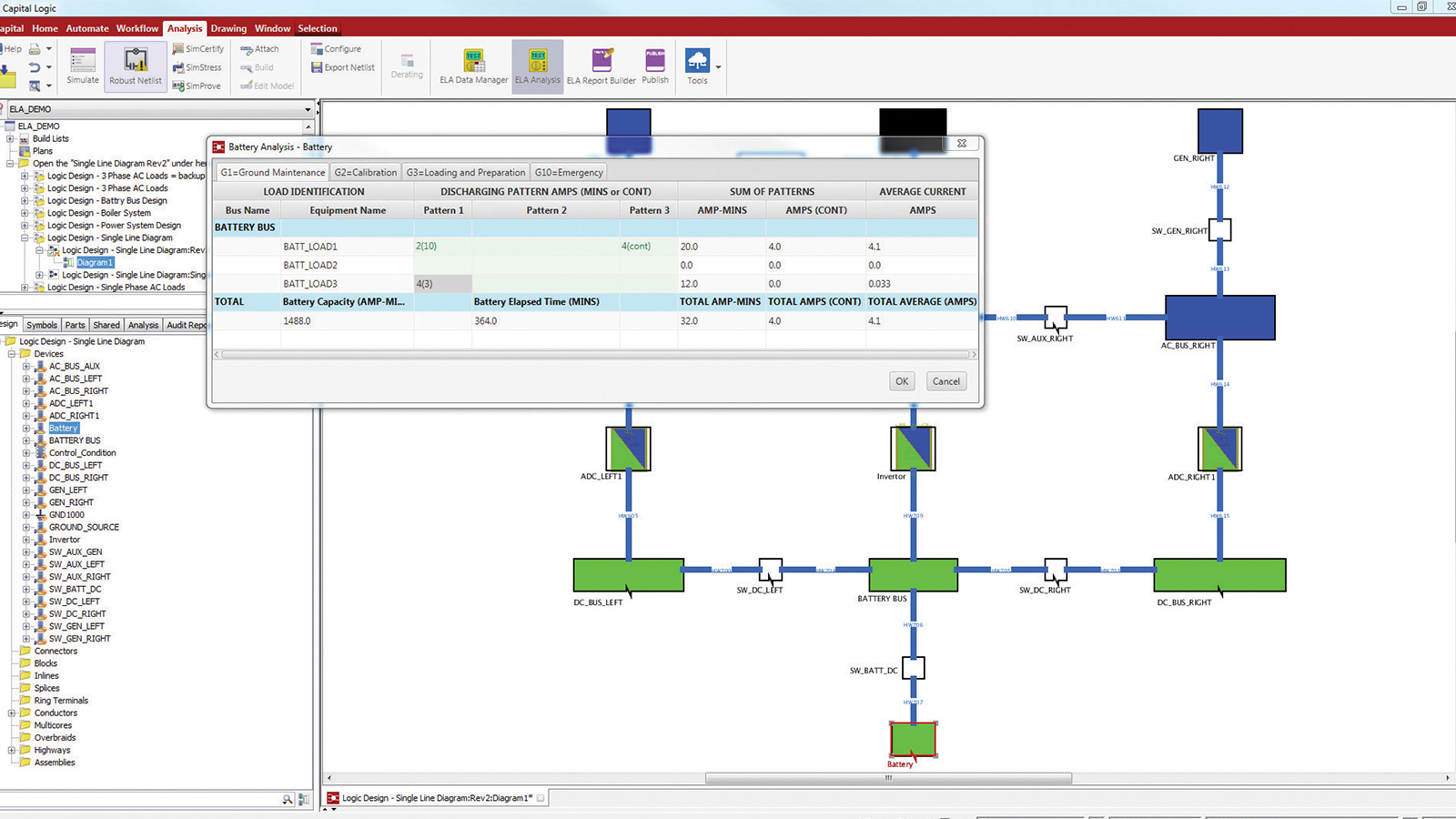Stay Up to Date
Submit your email address to receive the latest industry and Aerospace America news.
Aircraft companies can encounter unpleasant electrical surprises when they begin flight testing a freshly minted design. Modern cockpit displays, electronically controlled control surfaces and other components can draw so much power that some electrical systems need to shut down so the aircraft has enough power to keep flying.
In fact, the amount of electricity that the average passenger jet requires has skyrocketed by a factor of 10 over the past 50 years, says Anthony Nicoli, director of aerospace and defense at Mentor Graphics, a Siemens-owned software company in Oregon.
If excessive power demands are not discovered in the flight tests that precede compliance testing, adjusting the design to win regulatory approval can be expensive and time-consuming.
In hopes of solving the problem, Mentor Graphics in May introduced software called the Capital Load Analyzer. It predicts electrical power demand throughout the stages of flight, so designers can then root out most problems long before the plane starts compliance testing.
The process starts with a customer downloading Mentor’s software and creating a digital twin of the aircraft’s electrical systems. The Load Analyzer displays the aircraft’s electrical system to the customer as a single line diagram in which blocks represent the different electrical components, such as batteries, and the lines are the wiring that provides the power. An engineer can click on each block to see the power levels of each battery, generator, rectifier and bus throughout various stages of flight. Previously, engineers had to manually calculate the aircraft’s power demand using spreadsheets and other tools.
In compliance testing, aircraft must demonstrate enough power to operate in normal conditions as well as in emergencies. To test performance during an emergency, engineers practice load shedding, in which they simulate failure of various electrical systems.
“You see which nonessential systems can be turned off so the essential systems can stay on,” Nicoli says. “You identify a critical device, and you want to make sure you have enough voltage and current to function in an emergency scenario.”
These charts and graphs can be exported to Mentor’s publishing software to create a certification report for a regulatory agency such as the FAA or the European Union Aviation Safety Agency.
The Load Analyzer and Capital Publisher are part of a series of programs that can be tied to the same digital twin. The Capital series “is an environment that allows our customers to incrementally develop their electrical systems from concept through architectural definition into design, manufacturing, and then through the maintenance life of the platform,” Nicoli says.
About cat hofacker
Cat helps guide our coverage and keeps production of the print magazine on schedule. She became associate editor in 2021 after two years as our staff reporter. Cat joined us in 2019 after covering the 2018 congressional midterm elections as an intern for USA Today.
Related Posts
Stay Up to Date
Submit your email address to receive the latest industry and Aerospace America news.




